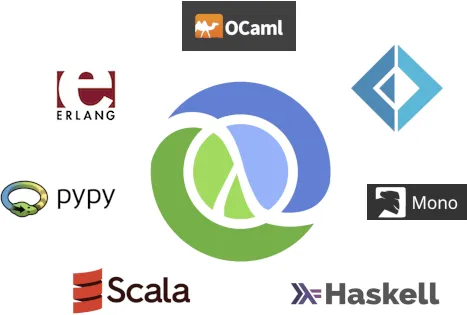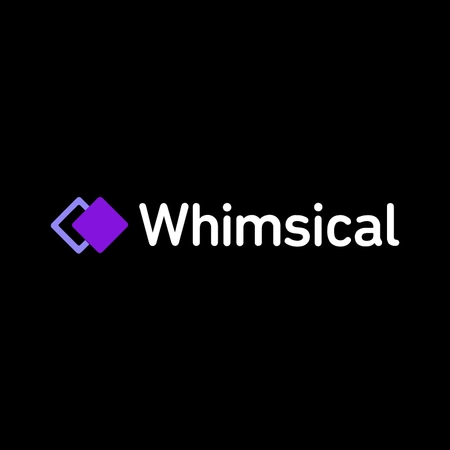AppsFlyer is one of the world’s leading mobile attribution & marketing analytics platforms. We had the recent pleasure of chatting with Nir Rubinstein, Morri Feldman and Ronen Cohen about their work.
Company background
Andrew: AppsFlyer was founded around 2011. Could you give me some background on the company?
Nir: The company was started officially in 2012 by Oren Kaniel, and Reshef Mann. They were playing around with a few ideas and identified an opportunity in the market for mobile attribution.
I’ll try and explain as simply and briefly as possible what mobile attribution actually is, because not everyone is familiar with this technology. Imagine you have the coolest app in the world which you want to promote. You push it to the app store and realize no one is going to see it unless you promote it, so you need to spend some money on ad networks to promote it. The networks come back to you a month later. Some of them have found you 100 users, others have found you 1,000 users and some say they’ve found you 10,000 users. You have to take these claims at face value and you have no idea if these 1,000 users from the one network are part of the 10,000 users that the other network reported. You have no notion of who the users actually are and what they are actually doing within your app.
Web attribution was created a really long time ago. It’s easy. You just put a pixel on your webpage and start tracking users. However, with mobile attribution, it’s more complicated, since the context of displaying an ad is usually a mobile web context and the context once the app is already installed is an in-app context on two totally different disks. And these two completely separate worlds need to somehow be connected, and this is where real mobile attribution comes in.
So, at the end of the month, AppsFlyer’s platform tells you how many users network A, B and C truly brought you - and you pay network A, B and C for this user acquisition. However, on top of this, the platform will also tell you that network A brought you 1,000 users and network B brought to you 100 users, but the 100 users from network B spent on average $10 in the app, whereas the users from network A spent 50 cents. This will enable you to make more intelligent decisions about which ad network is better for your business.
We started as a pure mobile attribution company and then we delved deeper and offered attributional analytics, and now we are the one-stop shop for mobile marketers in our ecosystem. I was AppsFlyer’s first employee, joining Reshef and Oren in 2012. Reshef started writing all the code and I joined him. Seven years later the company has 600+ employees and 14 offices around the world.
Andrew: Is the dev team mostly based out of Israel?
Nir: Yes, with the exception of Morri who lives in the US (although he started in Israel), our team in Kiev, as well as a few remotes out of Europe. When he moved, we decided we didn’t want to lose him. Most of the developers are in Israel - nearly 200 engineers, around 30 more people in Kiev in the Ukraine and a handful of remotes.
Tech story
Andrew: What is your tech stack like? Is it mostly Clojure?
Nir: It depends on which area. It’s a big development team and a big company and so we do a lot of different things. The backend services are predominantly Clojure. Our big data team is focused on Spark and is mostly Scala and a bit of Python for workflows.
Morri: Yeah, Python and Scala are used in the areas that are more batch and offline in their nature.
Nir: Yes and the frontend is not ClojureScript, but rather regular JavaScript - React / Redux - and built in a micro-frontend architecture.
Jon: How many lines of Clojure code do you have?
Nir: It’s hard to say exactly (since this is a constantly moving target - code is added all the time and removed when we pay our technical debt). But we’re definitely one of the largest Clojure shops in EMEA with 10’s of thousands of lines of code in production.
Morri: Maybe even upwards, we’ve got a lot of Clojure code. It’s quite hard to tell because a lot of our code is spread out across many microservices.
Jon: It’s always a fun sort of a record. One day we’ll get someone who says They’ve got 10 million.
Nir: Haha! I don’t know if that’s the record we want to hold.
Andrew: How do you find working with such a large Clojure code base?
Morri: Maybe it helps to explain that our architecture is small services that mainly read to and write from Kafka. Within any of these small services, it actually feels pretty manageable. There you have maybe a few thousand lines of code with each service, that’s usually managed by a small team of 5-10 people. As a whole, there’s a lot of code, but we don’t go into every project personally.
Tech history
Andrew: Could you give us some history behind the tech stack?

Nir: In the beginning, everything was in Python. Reshef started writing the code towards the end of 2011. I joined in June 2012 and it was all Python, and luckily for us, the business started growing. We were microservices oriented from the start, so we tried to avoid pushing everything into one big monolith. We worked hard to intelligently split everything into different services.
Even conceptually, even if they ran on the same machine, they were still different services, where in the beginning everything was in Python. We continued to grow and then we came to a single service where Python simply couldn’t cope with the load it generated. And this was the turning point, where we realized we needed to explore a new and different route. We started exploring the options, and realized we could probably write some low level C code and invoke it via Python, or we could try PyPy, a different VM or even possibly think about migrating to a completely new programming language.
All options explored, Reshef and I understood that, to achieve the scale we were looking for - by improving throughput, concurrency and multi-threading - we would need to introduce a new programming language. We knew that at the scale that we were growing, we would have difficulty scaling and growing with Python due to performance tradeoffs and other issues we had encountered, even though we still loved Python.
One thing we both quickly understood is that we really wanted a functional language as we’d both worked with imperative languages in the past and knew that concurrent and parallel programmes in imperative languages were hard.
Alongside the regular daily work, we took about two months to evaluate different functional languages. We tried Erlang and Haskell, and OCaml,. We even tried F# on Mono back in the day. We tried Scala and we tried Clojure, . Clojure won easily because back in 2012 the ecosystem for everything was kind of small in terms of libraries and open-source projects, etc. Scala and Clojure both rely on the JVM, but the minute both of us saw Scala, we didn’t really like it. It was like Java, an impediment, and we don’t really like Java either, to be frank. It’s very easy to write code in Scala that’s very Java-like; that’s OO and deals with entire concepts that we’re used to working with in OO languages. When we saw Clojure, neither of us had done any Lisp before and we took a week or two to grasp the concepts and then we kind of fell in love with it. From then on (around 2013) every new service was written in Clojure.
Andrew: That’s really cool.
Morri: It made a lot of sense in our case. I wasn’t around back then, but AppsFlyer and most of its background is comprised of a pipeline of small microservices that do a task, read from Kafka and manipulate data in some way, and then eventually write it to a different topic in Kafka. This is where Clojure really excelled. It’s great at treating data as a first class citizen, manipulating it and moving it back and forth, so it made a lot of sense.
Nir: It made a lot of sense because, when you learn about programming languages, you watch a couple of lectures and then you watch a video by Rich Hickey and he’s like: “Let me tell you about the conveyor belt and core.async channels”. And we thought, “Hey, that’s what we are doing in Kafka and we can do it in code in microservices. Let’s do it!” The notions that Rich presented around Clojure really resonated with us with how we treat data at AppsFlyer. They sort of melted together and we took it and never looked back.
Andrew & Jon: Cool
Open source Clojure libraries
Andrew: So, in terms of Clojure libraries that you use, are there any that particularly stand out for you? Is there stuff that you feel that you use on a day-to-day basis that you feel is vitally important to how the system runs?
Morri: core.async - all over the place. core.async in some services we have that are still backend services, but that serve more data. There’s a lot of compojure too.
Nir: There’s no new service without core.async inside because that’s how we model stuff - around core.async. We’re using most of what’s out there in open-source community. For logging, we’re using Timbre, for Redis we’re using Carmine and for JSON we’re using Cheshire. We use core.match a lot. We use a bit of Zach Tellman’s Manifold to pipeline async operations. We use http-kit a lot. We have also written libraries like aerospike-clj that provides a Clojure wrapper for Aerospike databases. So we are also working on contributing back to the community as well.
Morri: On the data side, we use clojure.java.jdbc and Honey SQL a lot.
Andrew: And in terms of the database side of things, you mentioned Kafka a lot. Do you use anything else for the data stores?
Morri: So, conceptually we divide our team into a real time team where the data is flowing in Kafka, and more of a batch-oriented team where we do batch processing and insert summary data into various databases to serve back to our clients for the dashboard. For the databases there, we’re currently using a mixture of mainly Druid, and ClickHouse, as well as a few postgres instances. As well as Aerospike that we previously mentioned.
Ronen: We’re also using HBase for real-time stuff, mostly Aerospike.
Jon: We’ve been working on our own database, Crux. The idea is that Kafka is a transaction log for us and we build up materialised views on top of RocksDB which feed in from Kafka and then we put a datalog query engine on top of that. You should check it out.
Nir: Yeah. We’re using CQRS and event sourcing on top of Kafka for a lot of our stuff. We are creating our own materialised views on RocksDB and other databases so it sounds like something we could use.
Jon: I don’t want to derail this conversation though.
Team adoption
Andrew: I have one other question about team adoption. How do you bring new people on? Do you only introduce people that are already doing Clojure? Is there a lot of Clojure development going on in Israel? Do you cross-train?
Morri: We don’t look for Clojure developers when we’re hiring. We look for good engineers.
Nir: The Clojure scene in Israel is not that big. We are the predominant company that uses it. There are 3 or 4 other companies that use it. They are really small companies - dozens of people - where the engineering organization is pretty small. So, for us to recruit from that specific niche is a non-starter. We do our best to recruit the best people that we can, where Clojure is just a tool in the stack.
I gave a talk in Israel about five years ago on Clojure and Morri came over to view it. He was doing his post-doctorate in Israel and was using Clojure to hack away at some stuff. He heard me talk about Clojure and how we use it and said “It’s kind of nice, maybe we can do something together”, and he’s been working at AppsFlyer ever since.
We’re looking for good people who know how to learn on their own, and we provide the learning environment, as well as developing internal Clojure courses, and a comprehensive onboarding process that sets hires up for success from day one. The core ability of the people is paramount here. We’re not looking for people with x amount of years experience in a language or framework A / B / C. We’re looking for experienced people with production experience, preferably with experience in some interesting languages besides PHP or JavaScript. If you meet that bar, then you can start working with us and learn.
Ronen: When people start here, they spend some time learning Clojure and getting more familiar with it and the system. We put a lot of effort into keeping them. We have a lot of internal classes where we teach Clojure, how to work with it, how to use it better, but it comes down to the people and how well they can learn. I think we’ve been very successful.
Morri: But definitely something we have to work really hard at once we hire people is to train them. Currently we have a process where we’re hiring people into R&D at large and then they do a rotation through several different teams doing training tasks in each team. Maintaining those tasks and evaluating the code that they write takes a lot of work. It’s definitely worth it. After they’ve gone through that, they generally will choose a team where they feel like they interact the best with. And as they do those training tasks, they’ll be writing Clojure code and getting review feedback on their code from each of the teams.
Nir: Coming back to the question about hiring. It’s easier now. We’re a big company with 600+ people globally, and nearly 400 just in Israel. We have a good reputation, from both a technology and a business perspective, but that’s after 7 years. It was a very different story when we were trying to recruit back in 2013 / 2014. The development team was 5 - 10 people then. New people would come along that already had many years of good experience in Java or C# and wonder why we were doing stuff in Clojure.
What we found is that it’s usually the people that can adapt, where a programming language is just a tool, that are the best to hire. We’ve only had a handful of people like this over the past few years, but they’re the best people in the company and they’re still the best people 4 or 5 years later. They’re the core people still in the company that know and can teach Clojure the best because they’re the very best at learning it. Now that we’re bigger, people want to join AppsFlyer in Israel because it’s a good company. They accept Clojure like it’s a known fact so the hurdle has become much smaller over the years.
One of the first questions I ask when interviewing someone for an engineering role is to tell me something new they’ve learnt in the past week or a cool video that they’ve watched, or even a blog post they’ve read that sounded interesting to them. What would they like to try out that they haven’t had the chance to do? We don’t care about the specifics. We want to find open minded people.
Rejuvenation
Morri: One last thing I wanted to mention is around the size of the code base. We tend to revisit many of our microservices and we’ll do a hard fork and rewrite it from scratch applying lessons that we’ve learnt along the way. So even though the code base may appear large, the amount of code that’s in production will be significantly smaller.
Nir: We have no other option really because the scale that we’re dealing with is doubling every 6 months. Whatever works for you when you’re processing 2 billion events today doesn’t necessarily work the same when you’re processing 10 billion events a day or 15 billion. Now we’re around 60 billion events per day so we have to keep reinventing the company as we grow.
Watch Morri’s Clojure/North talk: “Lessons in Building a System that Processes More than 70 Billion Events Daily”





